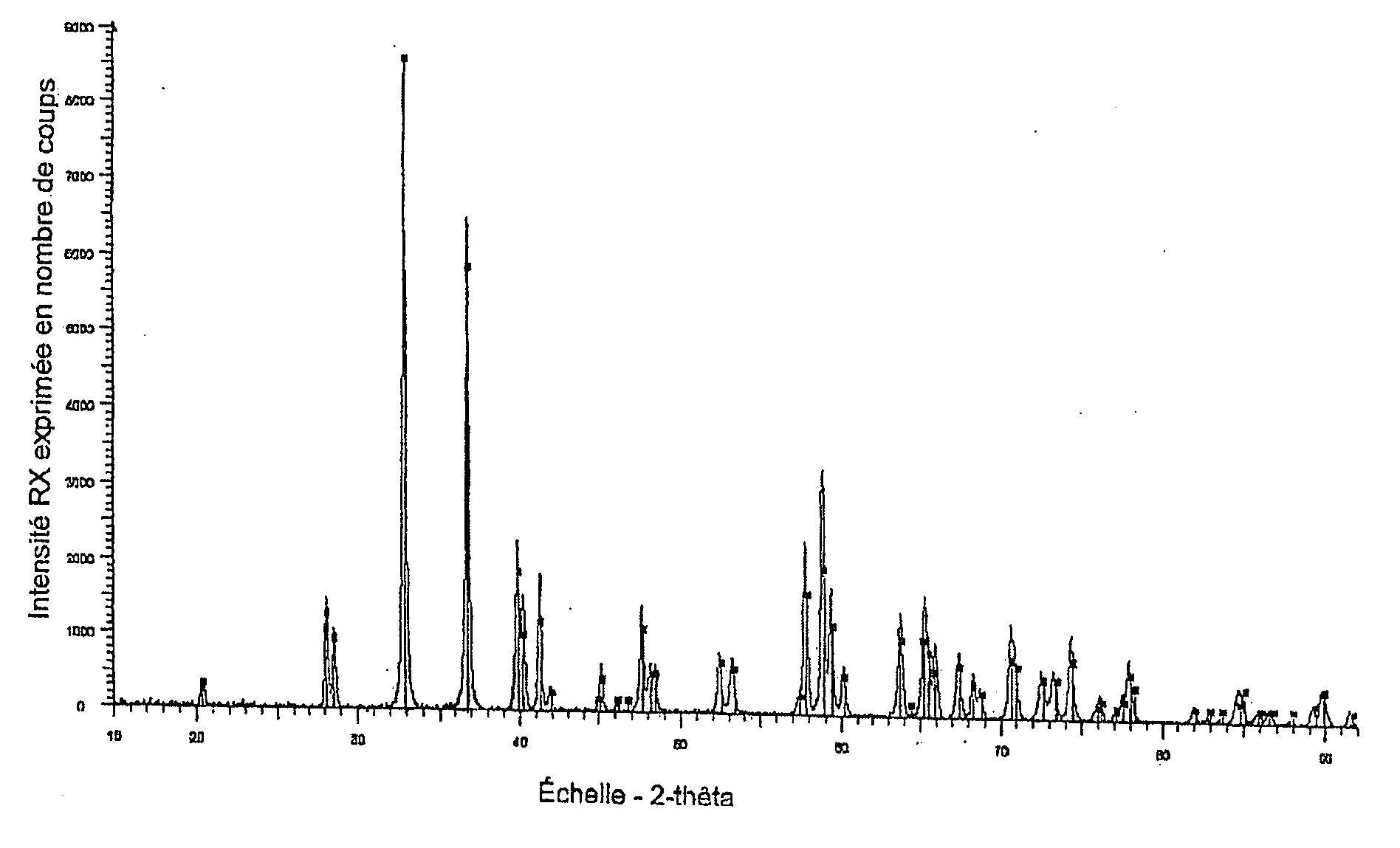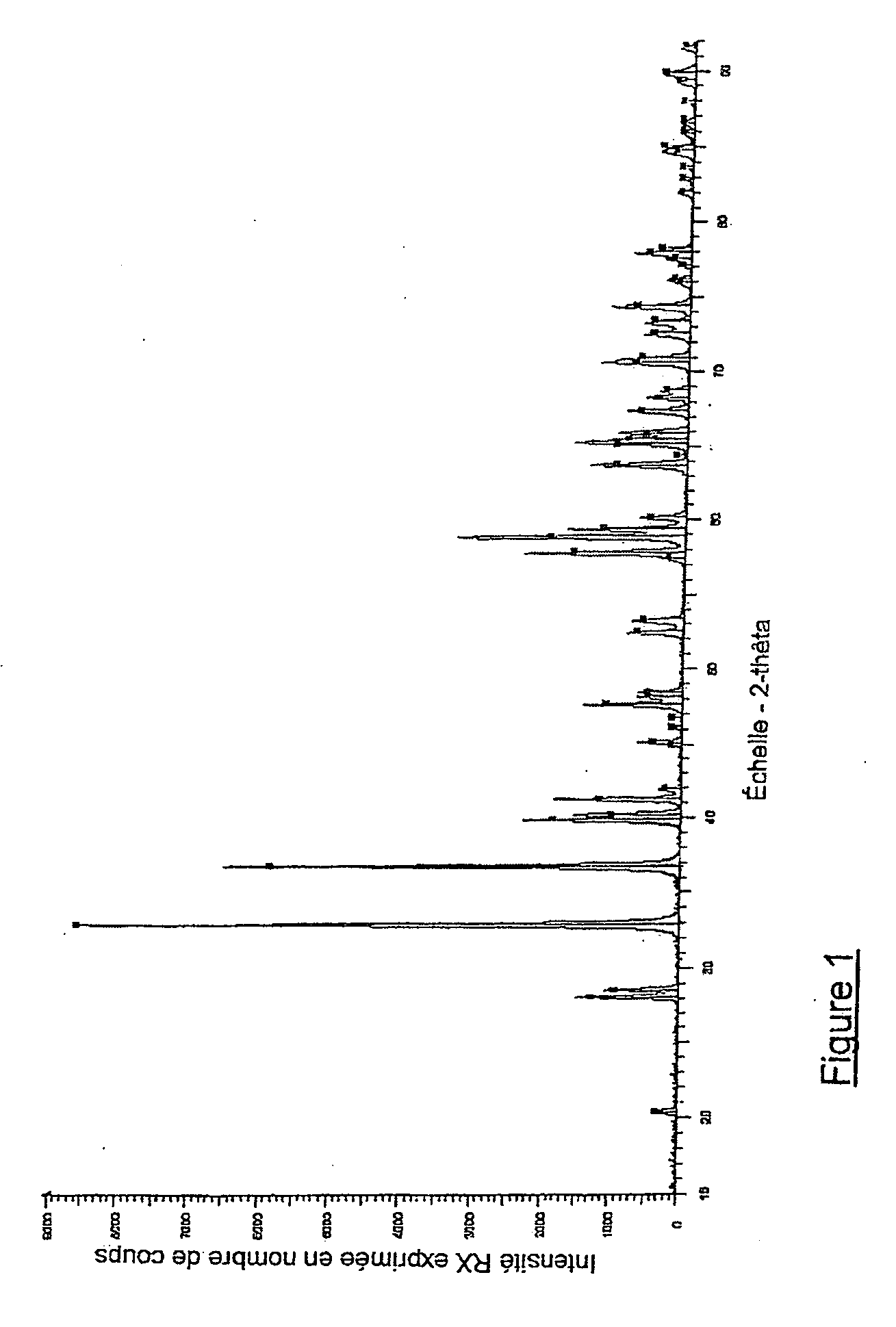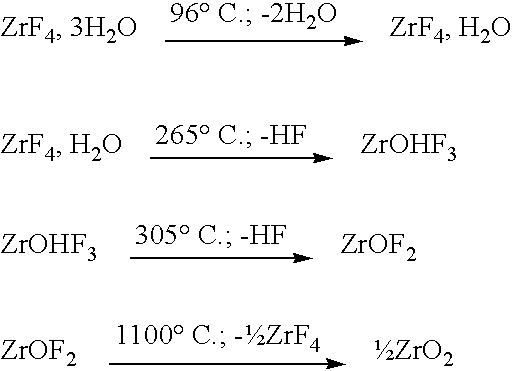Method for recycling zirconium tetrafluoride into zirconia
a technology of zirconium tetrafluoride and zirconium tetrafluoride, which is applied in the direction of zirconium oxides, titanium compounds, chemistry apparatuses and processes, etc., can solve the problems of large cost of production units for components of zirconium alloys, dangerous in industrial quantities, and the need for a complex installation
- Summary
- Abstract
- Description
- Claims
- Application Information
AI Technical Summary
Benefits of technology
Problems solved by technology
Method used
Image
Examples
first embodiment
[0035] the zirconium tetrafluoride is introduced into the reactor in solid, such as in pulverulent form.
second embodiment
[0036] the zirconium tetrafluoride is introduced into the reactor in an aqueous suspension or brine.
[0037] The water can be added to the reactor during the reaction, in liquid form or vapour form. It can be injected in one or more locations in the reactor, or be introduced via the reaction mass, for example, by bubbling or pressure-injection.
[0038] The initial ZrF4 or an aqueous suspension which contains it may be from a used pickling solution for a zirconium alloy, as described in EP-A-0 723 038 which generally contains nitric acid, hydrofluoric acid, water and ZrF4. This solution can be processed before conversion in order to eliminate part of the water therefrom. It is thus possible to carry out the evaporation of at least part of the water in the used solution and the crystallisation of ZrF4, then the recovery of a brine or aqueous suspension of crystallized ZrF4, which is used in the operation of thermal conversion.
[0039] Advantageously, it is at the same time possible to re...
PUM
| Property | Measurement | Unit |
|---|---|---|
| temperature | aaaaa | aaaaa |
| temperature | aaaaa | aaaaa |
| temperature | aaaaa | aaaaa |
Abstract
Description
Claims
Application Information
 Login to View More
Login to View More - R&D
- Intellectual Property
- Life Sciences
- Materials
- Tech Scout
- Unparalleled Data Quality
- Higher Quality Content
- 60% Fewer Hallucinations
Browse by: Latest US Patents, China's latest patents, Technical Efficacy Thesaurus, Application Domain, Technology Topic, Popular Technical Reports.
© 2025 PatSnap. All rights reserved.Legal|Privacy policy|Modern Slavery Act Transparency Statement|Sitemap|About US| Contact US: help@patsnap.com



